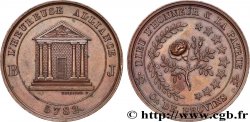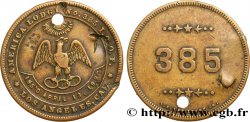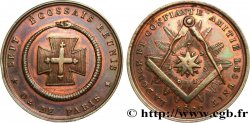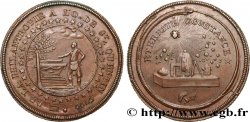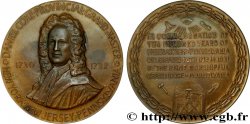fjt_535860 - FREEMASONRY ORIENT DU NEW JERSEY, PENNSYLVANIE, DANIEL COXE n.d.
70.00 €(Approx. 79.10$ | 58.80£)
Quantity
Add to your cart

Type : ORIENT DU NEW JERSEY, PENNSYLVANIE, DANIEL COXE
Date: n.d.
Mint name / Town : NEW JERSEY
Metal : bronze
Diameter : 75 mm
Orientation dies : 12 h.
Weight : 231 g.
Edge : Lisse
Catalogue references :
Predigree :
Exemplaire provenant de la Collection JCT
Obverse
Obverse legend : DANIEL COXE * PROVINCIAL * GRAND MASTER / NEW YORK * NEW JERSEY * PENNSYLVANIA * .
Obverse description : Portrait face. 1730 - 1732.
Reverse
Reverse legend : IN COMMEMORATION OF / TWO HUNDRED YEARS OF / FREEMASONRY IN PENNSYLVANIA / CELEBRATED OCT. 11.12.13.14. 1931 / BY THE RIGHT WORSHIPFUL / GRAND LODGE OF PENNSYLVANIA .
Reverse description : rameau sur le pourtour en six lignes. En haut niveau et perpendiculaire entourent oeil qui voit tout. Au bas, bible avec compas et équerre, maillet et truelle. .
Commentary
Médaille commémorative DAniel Coxe, Grand Maître, 1730 à 1732.








 Report a mistake
Report a mistake Print the page
Print the page Share my selection
Share my selection Ask a question
Ask a question Consign / sell
Consign / sell
 Full data
Full data
